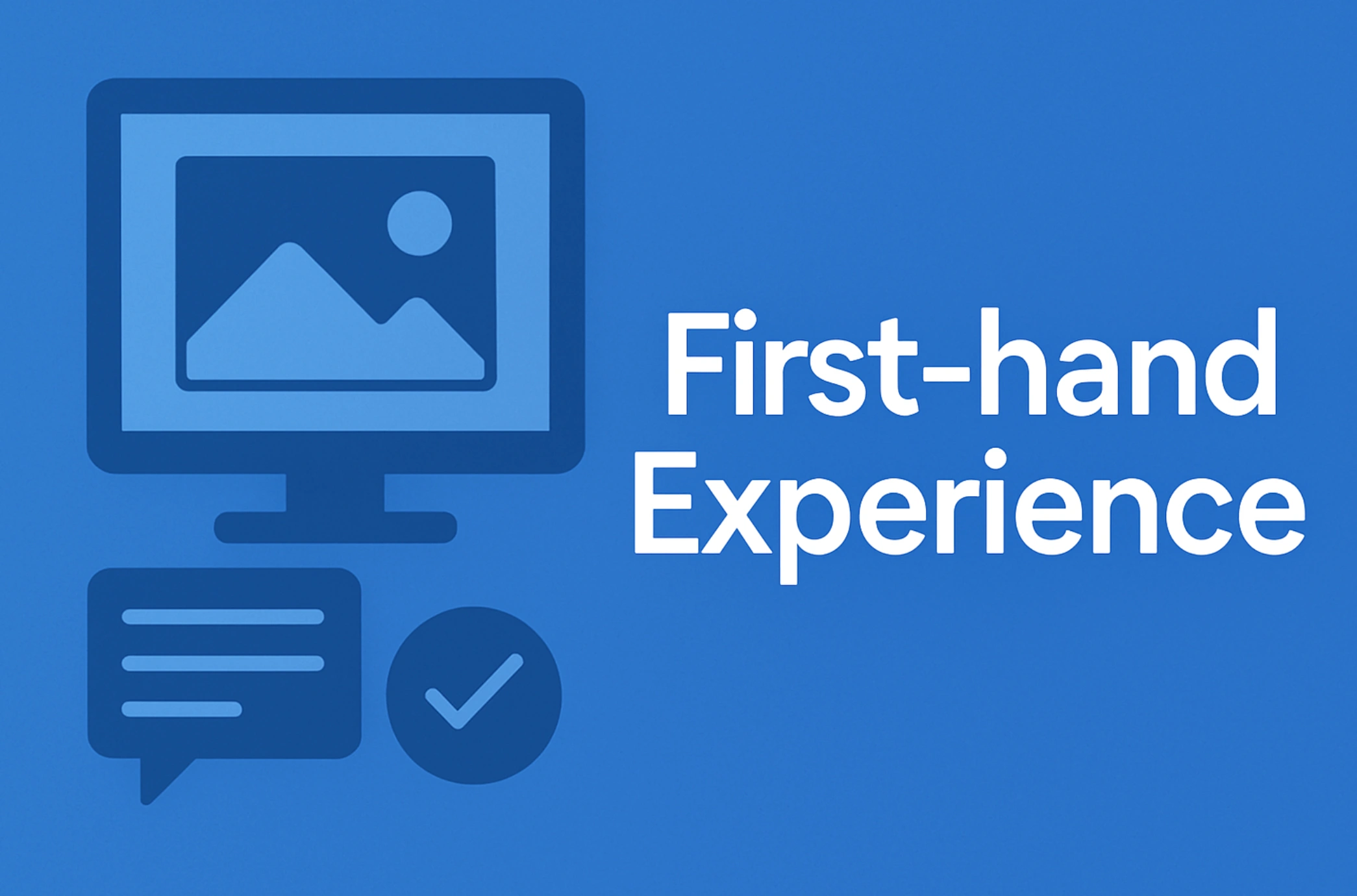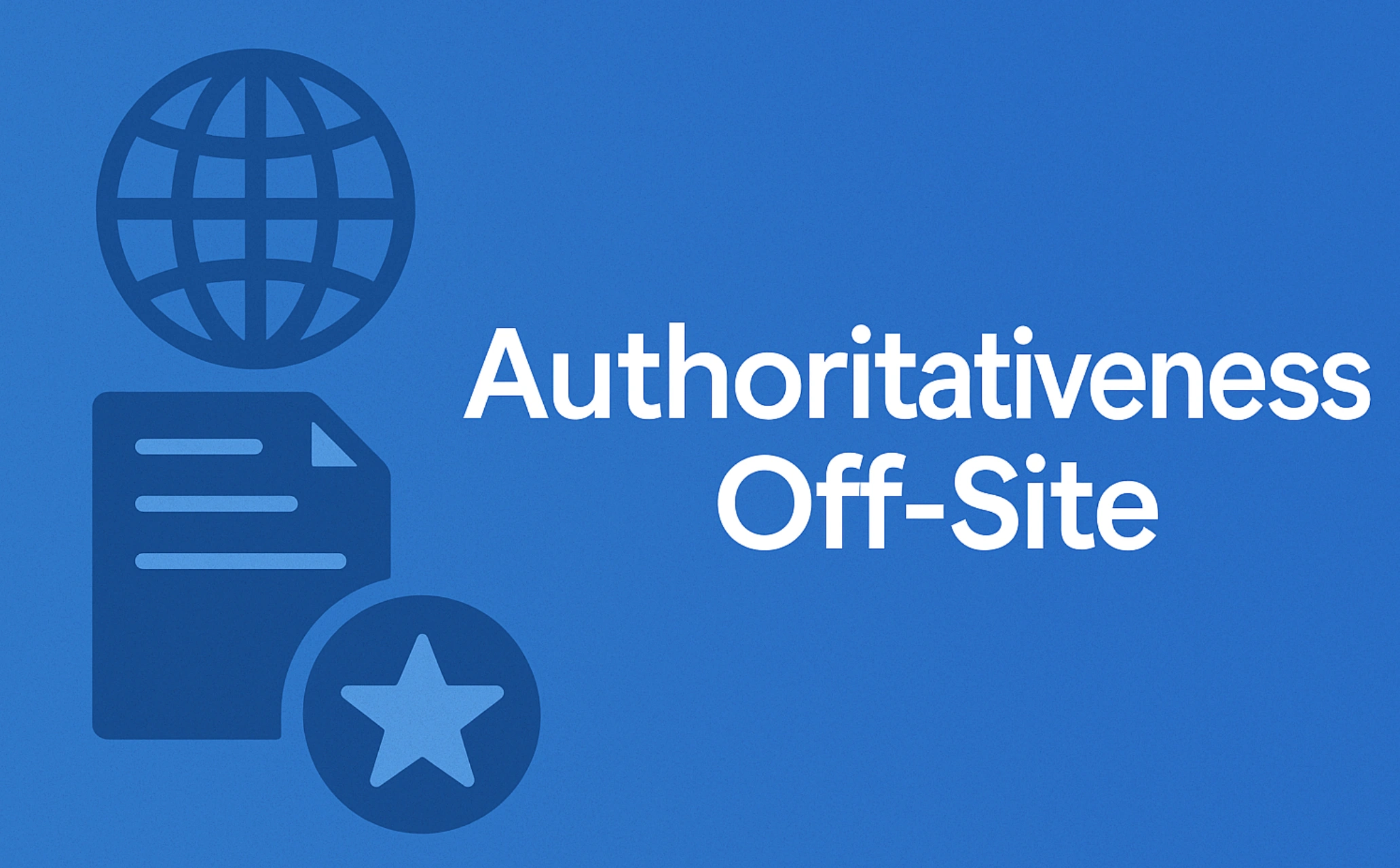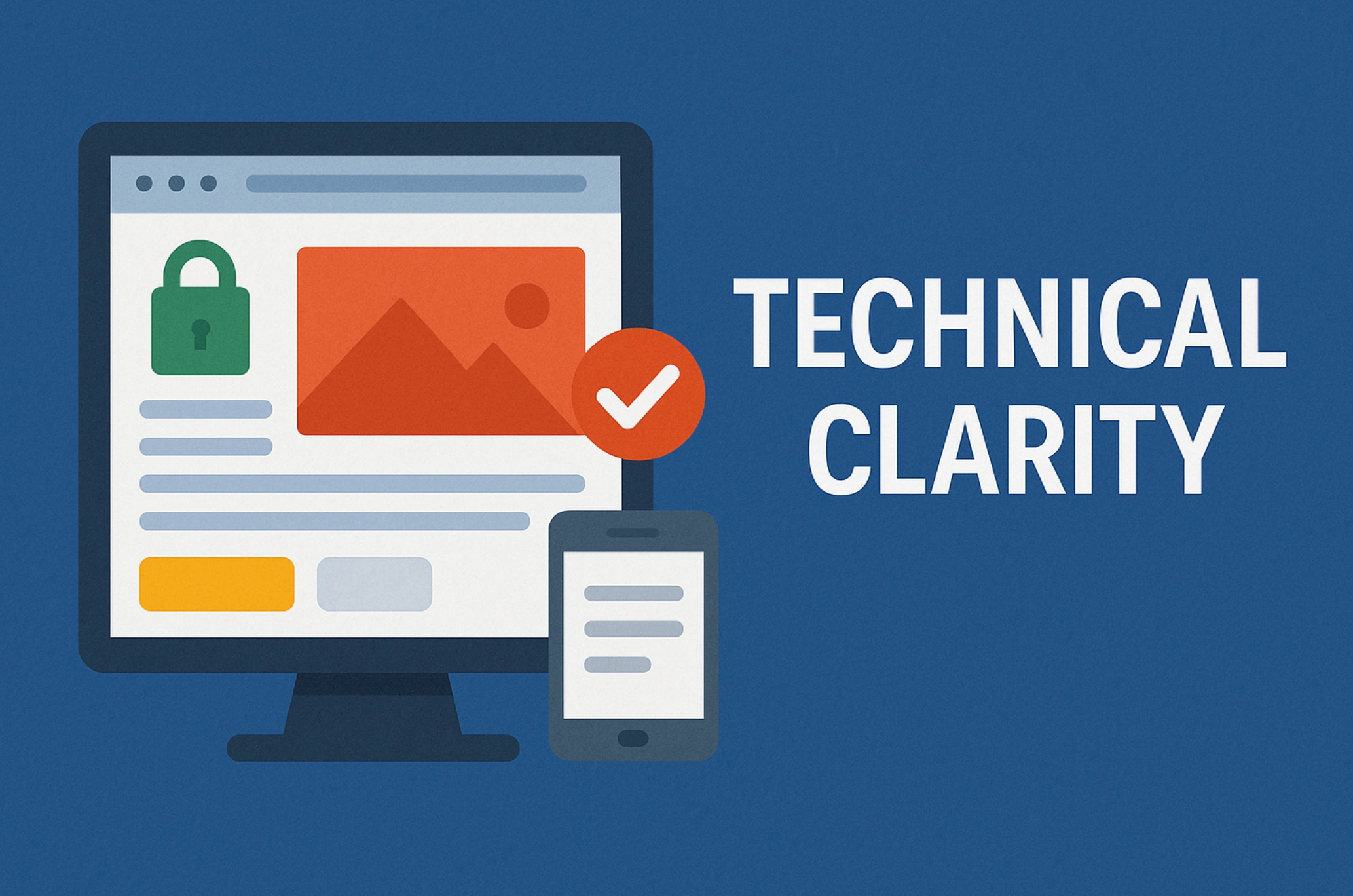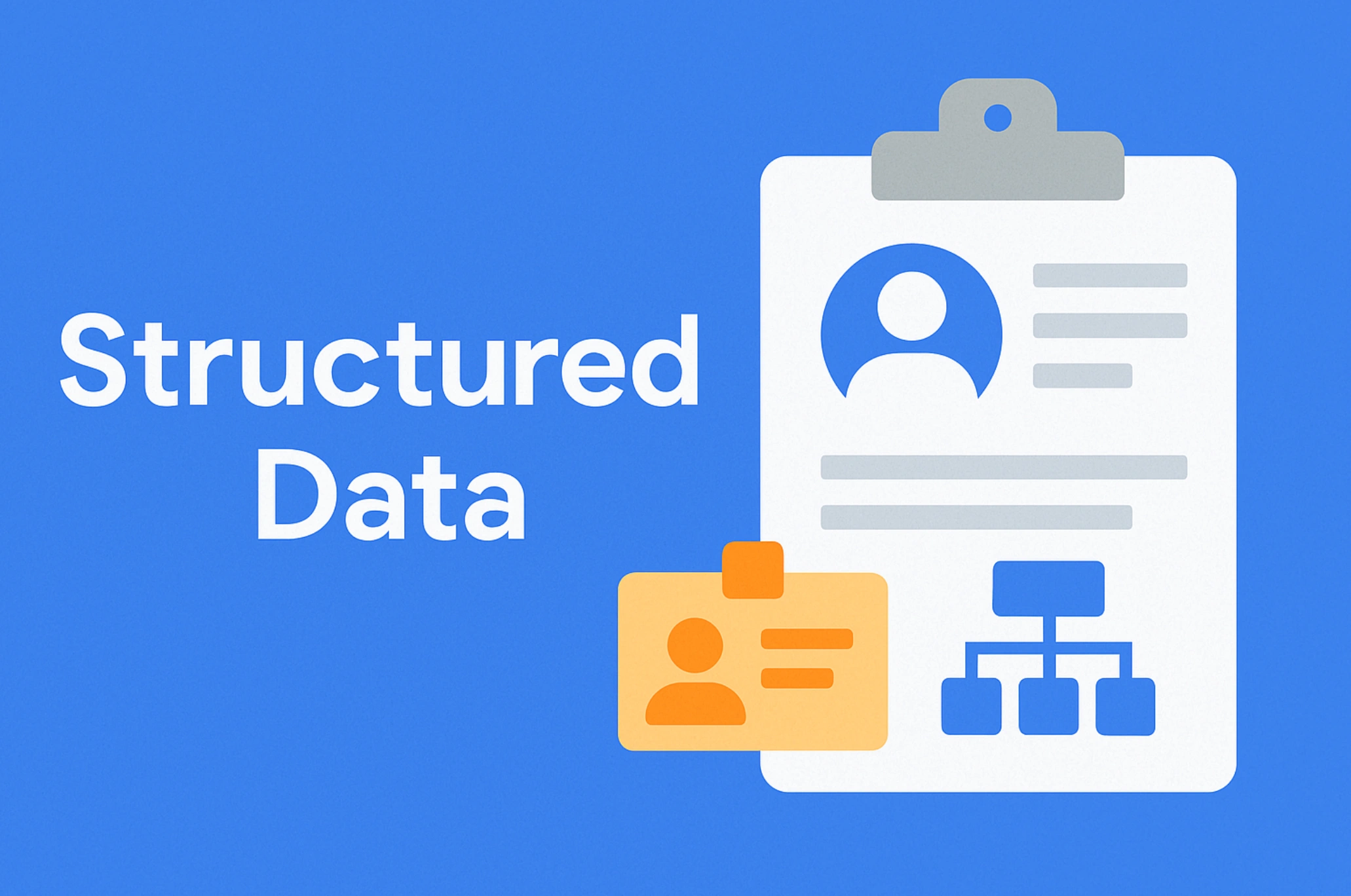Dissecting E-E-A-T: A Complete Strategy For Building Expertise And Authority In Niche Industries
Updated on
Published on

People trust the answer that looks safest and most useful, not the loudest one. That is why a real E-E-A-T SEO strategy matters in niche industries with higher stakes. If you want durable rankings and reputation, make credibility obvious in the interface, in your sourcing, and across the wider web. Use the Google E-E-A-T guide as your north star so every page shows experience, expertise, authority, and trust in ways anyone can verify (Google Search Central).
E-E-A-T framework explained
E-E-A-T stands for Experience, Expertise, Authoritativeness, and Trust, with trust at the center. Use it as a checklist for how you present proof, not as a score to chase. Start by asking what a cautious reader would need to believe you on this exact topic, then put that evidence in predictable places on every template. When your structure makes credibility effortless to spot, you reduce doubt and increase completion signals that help the whole site. For definitions and prompts, keep the people-first content page handy (Google Search Central).
- Identify the weakest letter for your niche and fix that first.
- Standardize where proof lives on each template so users never have to hunt.
- Add a short “Why you can trust this” block that points to authorship, sources, and review.

Start with trust, then layer experience and expertise
Trust comes from accuracy, transparency, and safety. Experience is first-hand proof that you have done the thing. Expertise is depth and credentials that stand up to scrutiny. For YMYL topics, the bar is higher, so signals like bylines, reviewer credits, and date stamps need to be visible, consistent, and boringly reliable. Design your pages so a careful reader can confirm who wrote it, who checked it, when, and based on what. The rater handbook shows what strong page-level and site-level trust looks like in the wild (Quality Rater Guidelines PDF).
- Put byline, credentials, “last reviewed” date, and reviewer credit near the top.
- Summarize your method in two lines and link to primary sources for consequential claims.
- Keep ownership details, contacts, and policies one click from every page.

How to improve E-E-A-T with on-site proof
Credibility is a design problem long before it is a link problem. Pair every byline with a real bio page, add a short methods note to how-tos and reviews, and show limitations or edge cases alongside claims. On service pages, spell out warranties, responsible use, certifications, and what is out of scope so expectations are clear. For a quick transparency checklist, use the publisher guidance that news teams follow and adapt it to your niche (Google News).
- Add author bios with headshot, role, and relevant experience tied to the topic.
- Label commercial relationships and sponsorships in plain language.
- Surface complaints and escalation channels to reduce risk concerns.
First-hand experience that systems can recognize
Machines and people both favor original evidence. Show your own photos and screen captures, annotate results, and include failure points that prove you actually tried the thing. Short “what we tested” notes and video chapters make verification fast and help retrieval. When readers see authentic artifacts, they stay longer, they share more, and your E-E-A-T SEO strategy compounds. Use the people-first guidance as your baseline for demonstrating experience on page (Google Search Central).
- Replace stock art on critical steps with your own media and captions.
- Add one line of context under each asset that states what changed and why it matters.
- Offer downloadable data or checklists so pros can reuse your work.

Expertise that stands up to scrutiny
Expertise is visible mastery plus a clear review loop. Name the author, show credentials that matter for the topic, and separate “written by” from “reviewed by” with a sentence on what the reviewer checked. Link to professional registries or publications where relevant. This pattern matches what evaluators are trained to verify and it reassures readers who need to make decisions quickly and safely (Quality Rater Guidelines PDF).
- Keep bios current and tailored to the page topic, not generic.
- Include license numbers or memberships where they carry weight.
- Publish a corrections log with date stamps so changes are accountable.
Authoritativeness that lives off your site
Authority is earned in the wider web. Think citations from standards bodies, expert associations, credible directories, and respected publications in your vertical. Publish primary research others can cite, contribute to consensus documents, and earn unprompted mentions through useful work. For a helpful mental model, study how Google elevates sources with proven topical reputation in its topic authority explainer (Google Search Blog).
- Pitch studies and how-to data to industry groups that maintain resources.
- Provide media kits and contact routes so journalists can verify you fast.
- Encourage honest third-party reviews without incentives and respond to critiques with updates.

Reviews content that proves you actually tested the thing
Reviews live or die on originality and clarity. Show how you tested, include head-to-head comparisons, and be explicit about who each option is best for. Readers reward specificity with time and trust, and the systems that surface reviews reward first-hand media and measured analysis. Align your templates to the official reviews policy so you are never guessing what is expected (Reviews system).
- Add test rigs, data tables, and a short verdict tailored to use cases.
- Disclose affiliate relationships and qualify outbound links correctly.
- Update when models change and display the update date prominently.
Technical clarity that reinforces trust
Helpful pages are fast, stable, and easy to use. Prioritize LCP and INP on pages that carry your trust signals, reserve space for media to avoid shifts, and keep dialogs polite and dismissible. Mobile layouts should surface the same content and metadata as desktop so nothing crucial disappears for smartphone users. The current page experience documentation ties these basics to better outcomes in Search and for users alike (Page experience).
- Preload the hero image if it is your LCP, never lazy-load it.
- Keep contrast and focus states visible for accessibility that doubles as clarity.
- Place privacy, returns, and warranty links close to primary content.

Links and citations that earn confidence
Links are how people and crawlers understand relationships. Internally, build topic hubs with descriptive anchors that reflect the destination. Externally, cite primary sources for consequential claims and qualify paid or user-generated links properly. Avoid manipulative schemes that try to mimic authority without the work. The fundamentals are laid out in the link best practices guide (Google Search Central).
- Use human, expectation-setting anchor text like implant risks and recovery timeline.
- Add lateral links between related pages so readers can go deeper without bouncing.
- Audit orphan pages and fix them with sensible pathways.
Structured data that corroborates who and what
Structured data helps systems confirm entities and eligibility for certain features, although display is never guaranteed. Mark up Organization on the home page and ProfilePage on author bios, then add feature-specific types only where the page truly qualifies. Keep every field aligned to visible content and validate changes before release. Start with the structured data overview for scope and rules (Structured data).
- Provide a preferred site name and a clean logo file so results look consistent.
- Link author bios to authoritative profiles with sameAs.
- Re-test after template changes to avoid silent breakage.

Use “About this result” to spot E-E-A-T gaps
Open the “About this result” panel on your own rankings and on competitors to see which relationships Google surfaces, such as matching terms, links from other sites, and region signals. If the panel hints that wording, references, or regional alignment are weak, fix those first. It is a fast way to turn a fuzzy problem into a concrete checklist (Google Help).
- Align terminology on page with the phrases that show up in your panels.
- Earn or improve off-site references that the panel already recognizes.
- Localize where intent is regional so the panel reflects the right country or city.
Niche industry playbooks
Some categories demand extra visible proof. The rater handbook outlines what “high” and “very high” quality look like in sensitive areas, which makes it the best single bar setter to keep in your internal docs (Quality Rater Guidelines PDF).
- Healthcare and mental health, pair practitioner expertise with patient experience, list credentials and review roles on page, add crisis resources when relevant.
- Financial and legal, show math, scenarios, and regulatory citations, link to regulator profiles, publish fees and conflicts in plain language.
- B2B software and industrials, publish method notes, uptime and security controls, implementation timelines, and named owner roles for accountability.
A 90 day E-E-A-T SEO strategy to operationalize trust
Run three focused passes so proof becomes muscle memory for your team. Use the ranking systems guide as context for how these changes align with what Search rewards over time (Ranking systems guide).
- Days 1 to 15 baseline, ship bylines, reviewer credits, dates, editorial standards, corrections page, and contact paths on every template.
- Days 16 to 45 proof and experience, replace stock on critical pages with original media, add two line methods to how-tos and reviews, publish tables or measurements where decisions hinge on data.
- Days 46 to 90 authority, secure credible third-party mentions or citations, request honest reviews without incentives, and audit “About this result” panels for your head terms to track progress.
FAQ
Is E-E-A-T a direct ranking factor?
No, it is a quality framework that guides how content is evaluated and it aligns with people-first principles in the official guidance (Google Search Central).
What improves perceived trust the fastest?
Visible authorship and reviewer credits, clear dates, a short method note, and a public editorial policy.
How should I structure review content?
Lead with what you tested, show the data, include your own media, and state who each option is best for.
What off-site signals matter most for authority?
Citations from respected organizations in your field and unprompted mentions that come from publishing useful primary work.
How do I know if my signals are showing up?
Check the “About this result” panel on your rankings and fix gaps in terminology, off-site references, and regional alignment.
The signal that outlasts every update
In niche industries the safest answer wins. When your pages show first-hand experience, accountable expertise, real-world authority, and effortless trust, you do more than match a framework. You build a reputation readers can verify in one glance, which is exactly what keeps rankings and referrals steady through every change.







